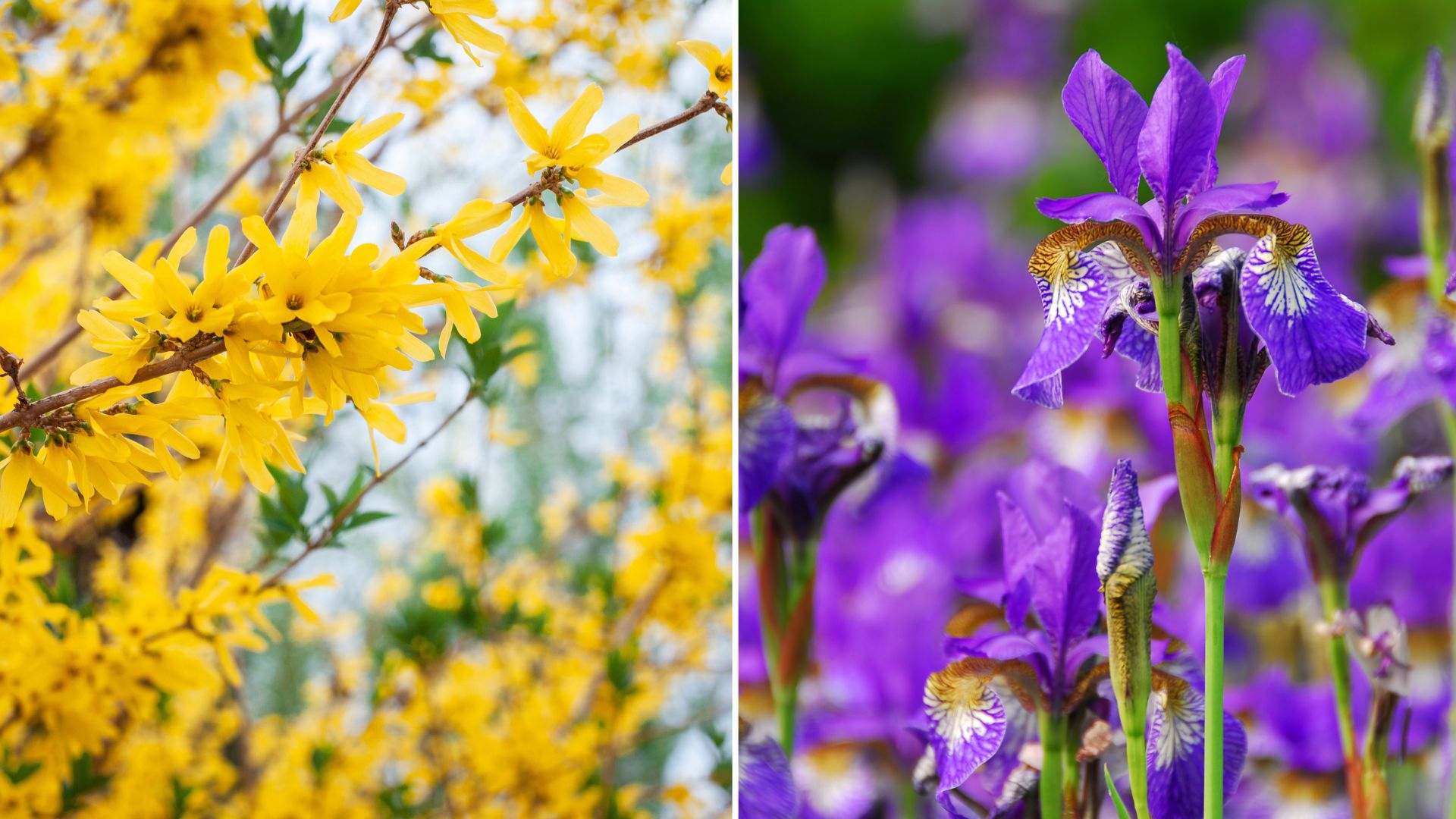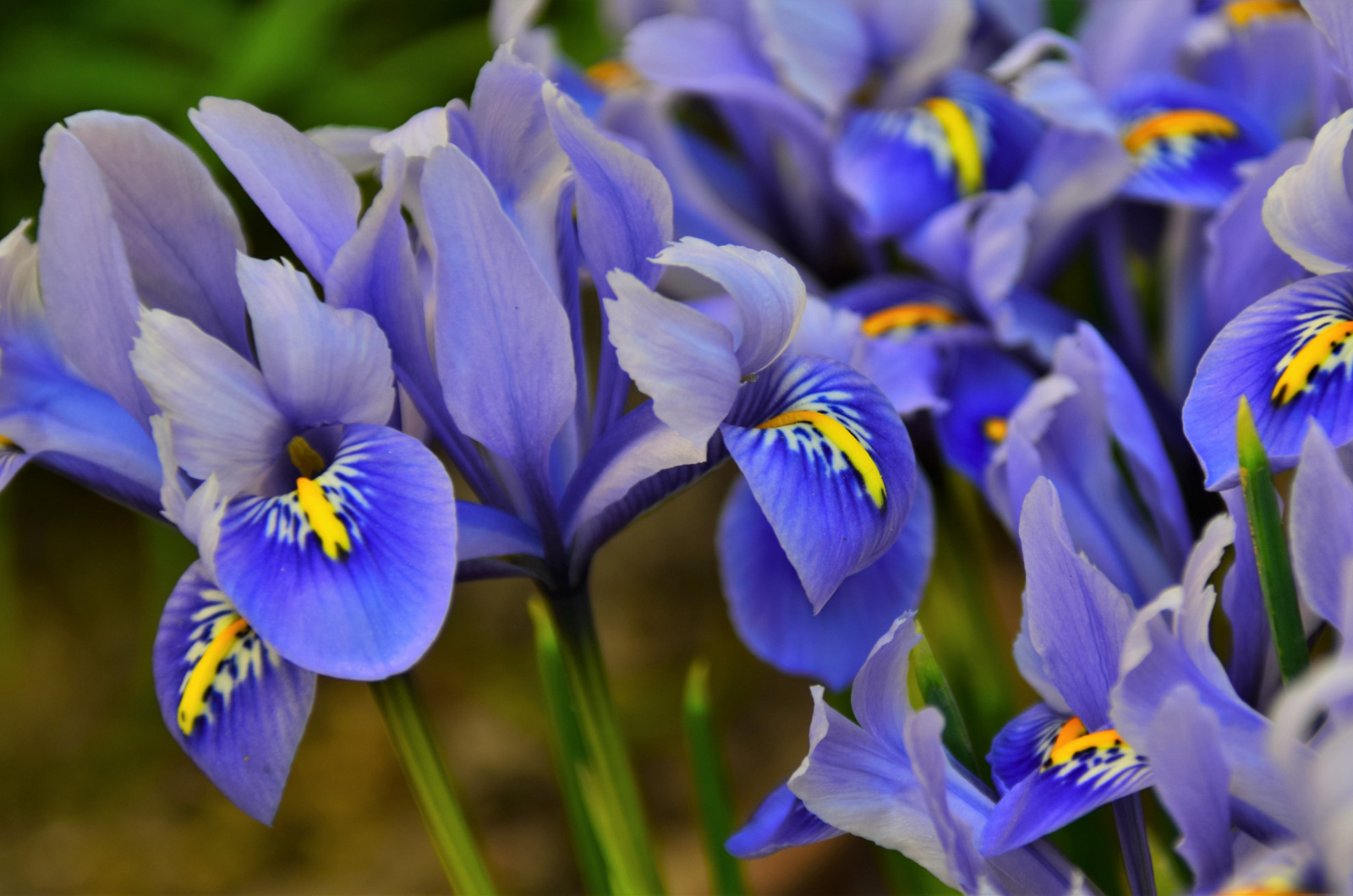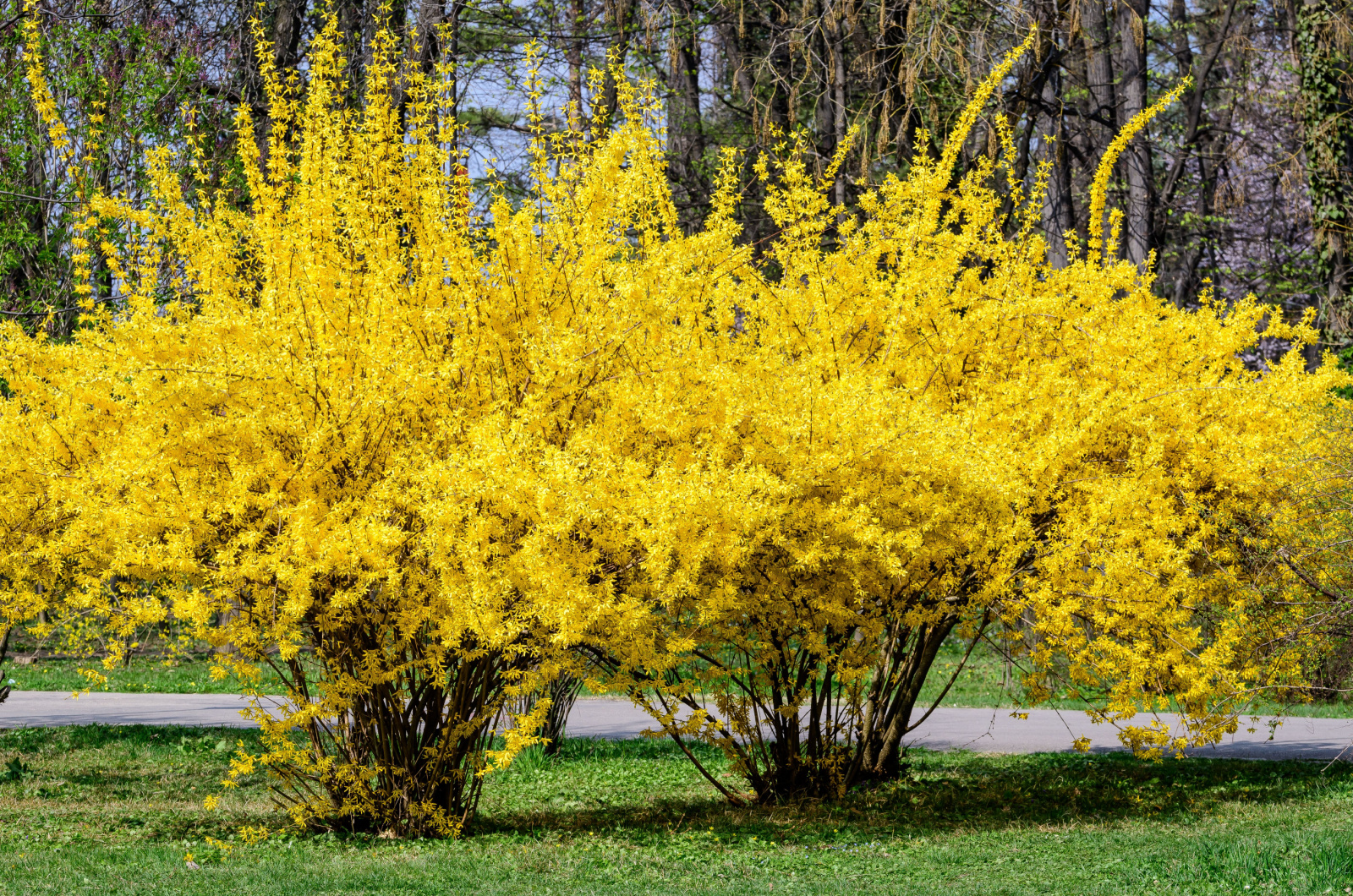There are numerous benefits of companion planting flowers or herbs next to vegetables. And yet, there’s nothing wrong with growing various blooming plants next to each other and reaping their benefits either.
One such combo are irises and forsythia. Their flowers complement each other perfectly, while their similar growing requirements make gardening a lot easier for you.
And the best part is that their blooming seasons may overlap and you’ll be able to enjoy vibrant yellow forsythia together with colorful irises.
How?
Well, forsythia is an early bloomer that pushes out flowers in early spring, while irises begin to blossom in mid-spring.
But let’s stop stalling and learn more about the advantages of growing irises next to forsythia shrubs!
Physical Benefits
One of the greatest benefits of interplanting forsythia shrubs with irises are their similar growing conditions, meaning you’ll have to do a lot less work in your garden.
These plants have the same light requirements. They flourish in full sun and need at least 6-8 hours of direct light in order to produce abundant and high quality blossoms.
Just make sure to plant irises in front of forsythia shrubs because the latter can block some sunlight and lead to less-than-satisfactory results.
In addition to these light preferences, both forsythia and irises have similar soil requirements. They both thrive at neutral pH levels, although irises can tolerate slightly acidic conditions and forsythias are fine with mildly alkaline conditions.
And to make matters even better, both plants have similar water requirements. Irises and forsythias both need about an inch of moisture per week, although the forsythia is a bit more drought-tolerant when established.
However, recently transplanted forsythia shrubs do need about 2 inches of water per week, so bear that in mind when planting it.
Also, both of these flowering plants attract numerous beneficial bugs, from bees and butterflies to birds. Therefore, they’ll make a great addition to your pollinator garden or any location near a vegetable plot.
The only difference in maintenance is that the forsythia is on the list of plants you should never cut back in fall, while irises benefit from pruning this time of year.
Visual Benefits
While growing irises and forsythia next to each other is highly practical, we can’t help but notice the visual benefits they have on gardens.
Tall forsythia shrubs can get about 10-12 feet tall, so the irises’ 2-3 feet of height seems quite insignificant. However, the combination of these two plants will give your garden more depth and structure, which can help make even a small front yard appear larger.
But, the juxtaposition of their size and shape isn’t the only thing that brings more visual interest to your garden. Their vibrant colors can greatly contribute, too.
Traditionally, purple or blue or more modern pink or red irises complement the vivid yellowness of forsythia perfectly. It can make an amazing contrast or create a fiery combination you won’t be able to look away from.
And if you want a more daring look for your front or backyard, you can interplant golden forsythia with various irises, bringing more color and life to your garden.



